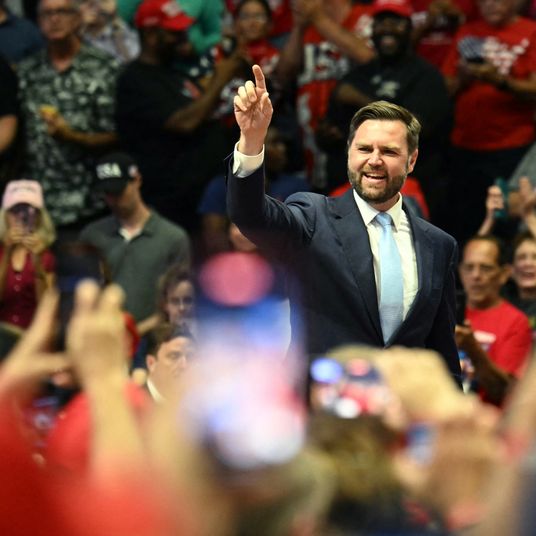
Last August, Jennifer’s 12-year-old son, Aaron, and his travel baseball team — a group of 12 hardworking and skillful players, plus three coaches and all the players’ parents — made the four-hour drive from their hometown on Long Island to Cooperstown for a seven-day tournament at All Star Village, which bills itself as “America’s only youth baseball resort,” complete with a pool shaped like a baseball glove. Both the original Cooperstown Dreams Park and the newer, shinier All Star Village host these weekly tournaments for travel teams all summer long. The trip is a childhood requirement for a certain subset of baseball players — like a family trip to Disney World or a limo on prom night. The lodging, meals, and uniforms cost the team about $20,000, or $1,300 per player and coach. Almost all of that money was fundraised, nonprofit style, by the kids’ well-to-do parents.
After all, they were the ones with Facebook accounts, co-workers, and email contact lists. Their ethos resembled Girl Scouts selling cookies or a student council running a canned-food drive, with a major caveat: The travel baseball team was not a nonprofit organization and neither was the Cooperstown tournament. “We went along with the fundraising because we were told that’s what people do,” Jennifer recalls. “But everyone on our team could have afforded to pay their own way.”
There are a number of ways to be a baseball kid in the United States, and the Cooperstown experience evades the majority. Many children begin with tee ball at age 4, which transitions to coach pitch at age 6 and then regular baseball through age 16. Run by town recreation departments and Little League Baseball and Softball, these teams are open to anyone who wants to play, often include supplementary clinics and indoor training, and are relatively affordable — a couple hundred dollars per season at most. Starting in middle school, free school teams also become an option, though many cut players based on skill.
Then there are travel teams — elite, try-out-only squads for ambitious players who want to “level up” their game. These teams practice multiple times a week and compete in tournaments almost every weekend. The time commitment is so sizable that the leagues naturally winnow out kids whose families lack flexibility or two cars. Parents are responsible for getting their players to weekend tournaments located hours from home, and game start times are typically posted just a few days before each tournament begins. Money is another filter. Travel team fees can range, but often hover in the thousands per season. (The fees depend on whether coaches are paid or volunteer, whether the organization has its own indoor facility and fields, and how many tournaments the team typically plays.) According to the Aspen Institute’s 2022 State of Play Report, families spend an average of $714 per season on baseball; parents in the wealthiest households spend almost four times more on their child’s primary sport than their lower-income counterparts.
Baseball parents I interviewed shared different reasons for investing in travel baseball as opposed to a recreational league or the school team. Some of them told me that the Little League season isn’t long enough. Others said their kids have aspirations of playing in college or need this experience to make a middle-school or high-school squad. But from my experience as a baseball mom, I think Dusti, a mother of three in Illinois, put it best: “It becomes a lifestyle.” In the Northeast, the season spans from April to October, and team communities — of both kids and parents — tend to grow tight knit. Almost every weekend in that timespan is a baseball weekend. In warmer climates, teams play year round.
On their long-awaited trip to Cooperstown, Aaron and his friends got to stay in barracks-style lodging together (their parents were nearby in hotels and vacation rentals), chow down on burgers and pizza in the communal cafeteria, meet teams from across the country and trade custom pins with them, and, most memorably, march into the stadium for the tournament’s opening ceremony alongside hundreds of other squads who also paid to be there. Everyone proudly carries their team banner. Aaron’s team played game after game (ten in all; only seven games are guaranteed in the package) in an effort to make the championship. In the end, they lost in the semifinal round.
Even celebrities fundraise for the Cooperstown experience. In January, actress Alyssa Milano faced an onslaught of online hate for setting up a GoFundMe to subsidize her son’s team’s trip. “Baseball gives us purpose and we are driven to be our very best. In order to compete, we must raise funds,” she wrote on her GoFundMe page, which has raised more than $15,000 at the time of this writing. When the haters came calling, Milano clapped back on Instagram: “Every parent raises money for their child’s sports teams and many of them do so through GoFundMe. I am no different.”
Not to get technical, but as my reporting netted out, it turns out that every parent doesn’t fundraise for their child’s travel sports team. While fundraising has become the norm of modern-day parenthood for a certain subset of moms and dads — often suburban and involved in the PTA — travel-baseball parents seem to have overwhelmingly transferred that mind-set to their child’s expensive and wholly optional sports teams. As a reporter and a baseball parent who has sheepishly fundraised for my own kid’s team, I reached out to parents whose kids play travel hockey, soccer, basketball, and lacrosse for this article and couldn’t find any who had participated in the same donation frenzy. “My Facebook feed is filled with baseball parents selling raffle tickets, Super Bowl squares, calendars, you name it,” said a mom friend who spends more than $10,000 a year for her kids to play travel hockey and soccer. “Why should I be the one paying for your trip to Cooperstown? No one paid for my kid’s hockey tournament.”
To raise the money for Cooperstown — which is a pay-to-play tournament — Aaron’s team hosted a game night at an event space. Jennifer and the other team moms sold tickets; crafted decorations; lugged cases of water and snacks to the venue; and, for weeks, called local businesses to ask them to donate products or services for a gift-basket raffle. (When Jennifer couldn’t secure any swag, she secretly bought a $300 camera to contribute.) They also organized a hit-a-thon where family and friends were asked to pick a player and donate a set dollar amount every time their batter had a hit. (When some of her “donors” didn’t send in their pledged amount, Jennifer covered that cost too — around $400 — rather than awkwardly asking them again to pay up.) “It never stopped,” says Jennifer, who added that while the travel organization didn’t require that every family fundraise, other parents looked down on anyone who opted out and simply paid the trip fees. “I felt like I was constantly on Facebook begging people for money.”
Matt, a dad and coach in Florida, works for Vertical Raise, an online fundraising outlet. He tells me that while many of the families on his son’s team can afford to pay the fees, they participate in fundraising efforts because “it shows a little bit of pride and ownership in your team.” He’s referring to fundraisers like helmet shakes, where players stand outside of a grocery store and ask people to throw loose change into their baseball helmet, not unlike a street performer. “They’re working a little bit, getting out into the community, and talking to people,” he says. Stephanie, in New Jersey, also didn’t mind selling Super Bowl squares or participating in helmet shakes when her son’s team went to Cooperstown in 2019. “We pay a lot for travel ball, so it was helpful to have our Cooperstown fees deferred,” she says. “And with the helmet shakes it’s kind of guilt free because there’s no pressure. You can walk by or you can donate.”
Kristina, an accounts-payable specialist in Northwestern Louisiana, disagrees that it’s harmless to ask people for money outright. “I refuse to do it. It’s borderline tacky, and it doesn’t teach the kids anything,” she says. Instead, her son’s 10U ( 10 and under) team is raffling off an in-home generator that they purchased, along with installation by their coach, who is also an electrician. They will use the proceeds to fund their trip to a summer tournament in Dallas organized by the USSSA Baseball organization.
According to Jamie Weiss-Flesher, the youth-program director for the New York arm of TBT Baseball, a national travel organization, fundraising is necessary to cover the cost of the coach accompanying the team. “If we didn’t fundraise, we’d have to raise our tuition, which would price out a lot of families,” she says. Eschewing the luxe tournament trend in favor of relative affordability isn’t an option: “Experience trips have become the expectation. Very few people want to play on a team that doesn’t go to Ripken or Cooperstown.”
For high-school players, tournaments like USSSA and Perfect Game are also where the college scouts are — or at least that’s what parents have been told. Kerry, a single mom of two and a move coordinator in Florida, relies on fundraising for her kids’ trips. She spends $700 to $800 every month for her son to play on his team, which maxes out her budget. “All we’re trying to do is give our kids a better shot at playing their sport and maybe getting a college scholarship,” she says. But Linda Flanagan, author of Take Back the Game: How Money and Mania are Ruining Kids’ Sports and Why It Matters, tells me that sports venues like Ballparks of America in Branson, Missouri, and the Ripken Experience (with locations in Aberdeen, Maryland; Pigeon Forge, Tennessee; Elizabethtown, Kentucky; and Myrtle Beach, South Carolina) literally bank on the dreams parents have for their kids. “It’s very emotional for parents. They think, ‘If I raise $1,200 to offset the fees, this will pay off. Maybe my kid will end up getting recruited,’” she says.
Fewer than 2 percent of high-school athletes receive athletic scholarships, and 1 percent receive a “full ride,” according to Next College Student Athlete (NCSA), the largest college-athletic recruiting platform. Only six Division 1 sports are eligible for full scholarships: men’s and women’s basketball, football, women’s tennis, women’s volleyball, and women’s gymnastics. And that’s if they play at the collegiate level at all. Just 8.1 percent of high-school baseball players go on to play on their college team.
Thomas is a father of two boys and a volunteer basketball coach for a recreational team in Maryland. He says that many children on teams like his — which costs $85 per player for the season — need financial help to access any training whatsoever in the off-season. When he noticed that some of his players couldn’t afford summer clinics or camps, he started a GoFundMe to cover their tuition. To date, the fund has raised nearly $12,000.
“Someone should do this in every town,” he says. “I think everyone is aware of the inequity of the cost of youth sports and they want to help, but they don’t know how.”
Travel baseball parents could certainly show them.
Some names of parents and children have been changed to protect their identities.





























